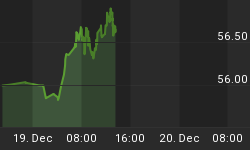Some of you, not many, have wondered why The Econtrarian has not been published since May 3, 2006. The principal reason for The Econtrarian's hiatus is that I have had nothing new to say. That still holds. But an op-ed piece in the September 20, 2006 edition of The Wall Street Journal by Professor Jeremy Siegel prompted me to dust off an old Positive Economic Commentary (the forerunner to The Econtrarian). Professor Siegel's most recent WSJ op-ed commentary was similar to the one he penned back on January 26, 2004. In both, his thesis is that up-and-comers in the developing world will come to the rescue of over-the-hillers (aka, baby boomers) in the U.S. I had some doubts about this thesis back in January 2004 and still do in September 2006. Below is the retort I wrote to Professor Siegel's January 2004 op-ed piece with updated data. The original data are in parentheses.
Friday, January 30, 2004
The Way We Live Now - Enjoy It While You Can?
I was intrigued by an op-ed piece in the January 26 edition of the WSJ by Professor Jeremy Siegel entitled "The Way We Live Now." Siegel argues that economic growth and development in China and India, for example, are something that should be welcomed by U.S. residents, not feared and fought. I agree. I have always been of the opinion that more is better than less when it comes to the available supply of goods and services. So, to the extent that the economic development of China and India will lead to an increase in the global supply of goods and services, this is all to the good. Siegel concludes that as U.S. baby boomers are scheduled to begin retiring in six years, they and their offspring will come to appreciate the expanded economic capacity of China and India. Why? Because the offspring of U.S. baby boomers are unlikely to be able to produce enough goods and services to take care of Ma and Pa and enjoy a rising standard of living for themselves, too. I certainly agree with this last statement.
Where I disagree with Professor Siegel is how this all will work out. We are not the only developed economy that will want to tap China and India for goods and services in the future. The Japanese and the western Europeans also have rapidly aging populations. But there is one big difference between us and them. In the aggregate, they are saving for their old age while we party on. The chart below shows that in 2005 (2002) the U.S. national net saving rate (gross saving less the nominal depreciation of the national capital stock) was a post-WWII low of 0.1% (2.4%) -- in fact, the lowest net saving rate since the Great Depression!

How are we going to finance all of the goodies from China and India in coming years? By selling assets and floating debt? Professor Siegel believes that billions of Chinese and Indian investors will be falling all over themselves to buy U.S. dollar-denominated assets. But wait a minute. Aren't we now selling a lot of assets and issuing a lot of debt. The Fed's flow-of-funds data show that net foreign claims on U.S. assets already are $5.9 ($2.3) trillion, or about 45% (21%) of nominal GDP. That total is being added to at a current rate of about $860 ($550) billion a year. When the baby boomers of Japan and Western Europe begin to retire, they, or their governments, also will be selling assets and floating debt to finance their purchases of Chinese and Indian goods and services. Some of the assets the Japanese and Western Europeans will be selling will be the U.S. dollar-denominated ones they are acquiring right now in anticipation of their retirement. Remember, Japan and Western Europe are now running current account surpluses. Might there not then be a glut of dollar-denominated financial instruments in the global markets, what with the U.S. selling new ones and the Japanese and Western Europeans simultaneously selling previously-acquired ones? Might the buyers wonder how the U.S. intends to service all of this debt or pay dividends on all of this equity? Might the buyers suspect that the U.S. will attempt to finesse this issue by simply "printing" more dollars?
I am skeptical that all of this is going to work out as well for the U.S. as Doctor "Pangloss" Siegel thinks. My suspicion is that over the next 20 years or so, the dollar will fall a lot more, U.S. interest rates will rise a lot to induce baby boomers' offspring to save a lot, and baby boomers will be fighting each other for the greeters' positions at Wal-Mart.















